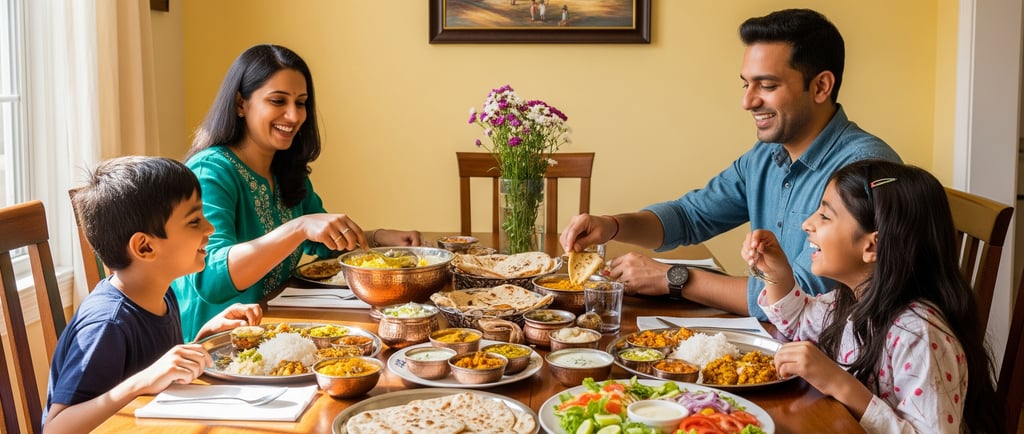From Fear to Fun: How to Talk About Healthy Eating with Your Family
Trulo team
8/21/20253 min read


We all want the best for our families, and that often includes ensuring they're getting the nutrients they need to thrive. But let's face it, navigating the world of healthy eating with a family, especially one with picky eaters, can feel more like a battle than a bonding experience. The pressure to eat "right" can create anxiety around food, turning mealtimes into stressful standoffs.
Here at Trulo, we believe that healthy eating should be a source of joy and connection, not fear. That's why we've put together some practical advice on how to shift the conversation around food in your family from one of obligation to one of excitement and exploration.
1. Ditch the "Good" vs. "Bad" Labels:
The first step is to remove the moral judgment from food. Labeling foods as "good" or "bad" can create guilt and shame around eating. Instead, focus on the nutritional benefits of different foods. Talk about how fruits and vegetables give us energy to play, how protein helps our muscles grow strong, and how whole grains fuel our brains for learning.
Instead of saying: "You shouldn't eat that candy, it's bad for you."
Try saying: "This apple has lots of vitamins that help keep you healthy and strong! What fun activities do you want to do today with all that energy?"
2. Make it Visual and Engaging:
For children especially, abstract concepts like "vitamins" can be hard to grasp. Instead, make healthy eating visual and engaging:
Involve them in the process: Take your children grocery shopping and let them choose colorful fruits and vegetables. Talk about where the food comes from and how it's grown.
Cook together: Even simple tasks like washing vegetables or stirring a salad can make kids feel more invested in what they're eating. They're also more likely to try something they helped prepare.
Presentation matters: Get creative with how you present food. Cut sandwiches into fun shapes, arrange vegetables into a rainbow on a plate, or make fruit skewers.
Use stories and games: There are tons of books and online resources that make learning about healthy eating fun and interactive.
3. Focus on Small, Sustainable Changes:
Don't try to overhaul your family's eating habits overnight. This can lead to resistance and frustration. Instead, focus on making small, sustainable changes over time.
Introduce one new healthy food at a time: Offer it alongside familiar favorites and don't pressure anyone to eat it. It can take multiple tries for a child to accept a new food.
Make healthy swaps: Instead of white bread, try whole wheat. Instead of sugary drinks, offer water or fruit-infused water.
Sneak in extra nutrients: Add grated vegetables to sauces, blend spinach into smoothies, or use whole wheat flour in baking.
4. Lead by Example:
Your children are always watching you. If they see you enjoying a variety of healthy foods, they're more likely to be open to trying them themselves. Make healthy choices visible and talk positively about the foods you're eating.
5. Respect Preferences, But Set Boundaries:
It's important to acknowledge that everyone has different tastes and preferences. Don't force your child to eat something they genuinely dislike. However, it's also important to set boundaries. For example, you might say, "You don't have to finish all your broccoli, but you do need to try a few bites."
6. Make Mealtimes About More Than Just Food:
Create a positive and relaxed atmosphere around mealtimes. Turn off the TV, put away phones, and focus on connecting as a family. This can help reduce stress and anxiety around food.
7. Celebrate Progress, Not Perfection:
Acknowledge and celebrate even small steps your family takes towards healthier eating. Focus on progress, not perfection. There will be days when things don't go as planned, and that's okay. The key is to keep the conversation positive and keep trying.
Talking about healthy eating with your family doesn't have to be a source of stress. By focusing on positivity, engagement, and small, sustainable changes, you can help your loved ones develop a healthy relationship with food that will last a lifetime.
What are your go-to strategies for encouraging healthy eating in your family?
